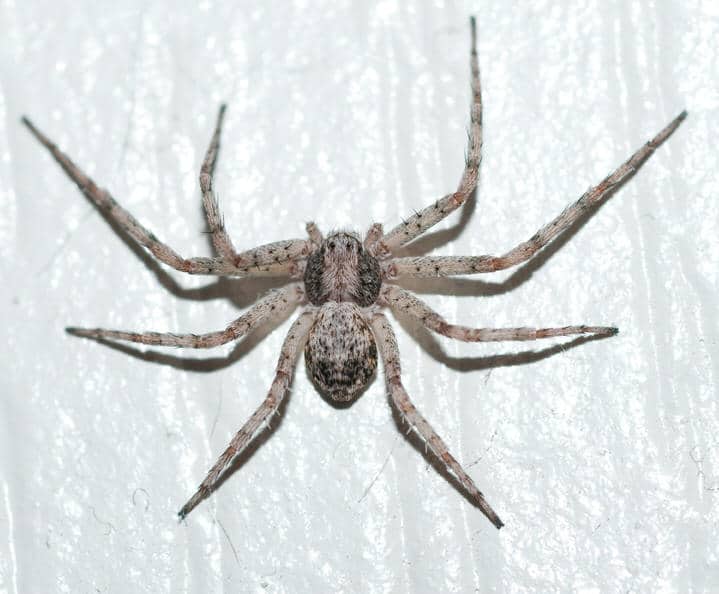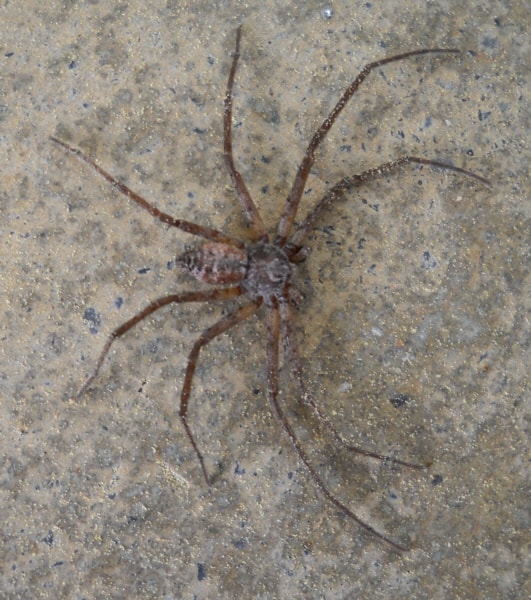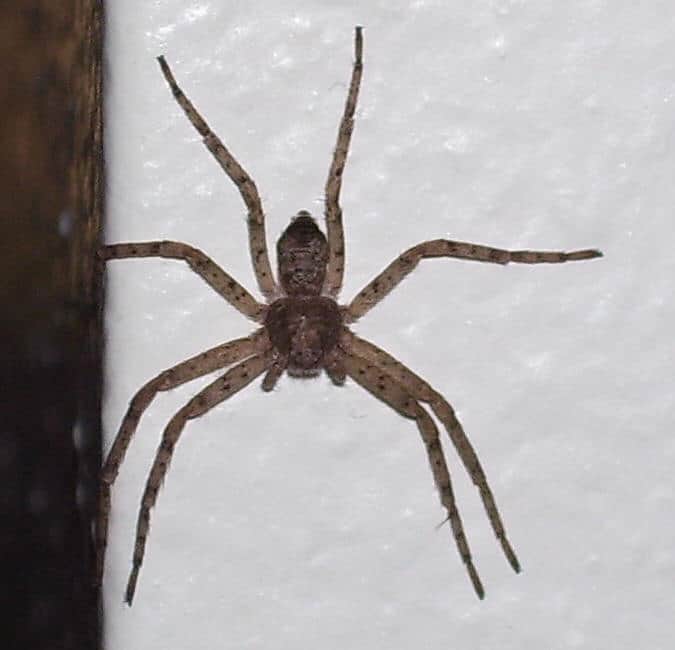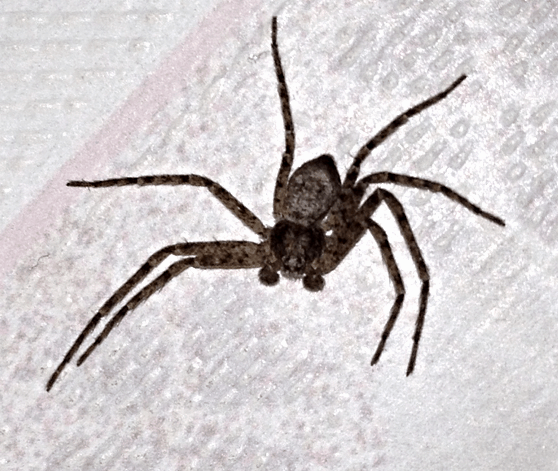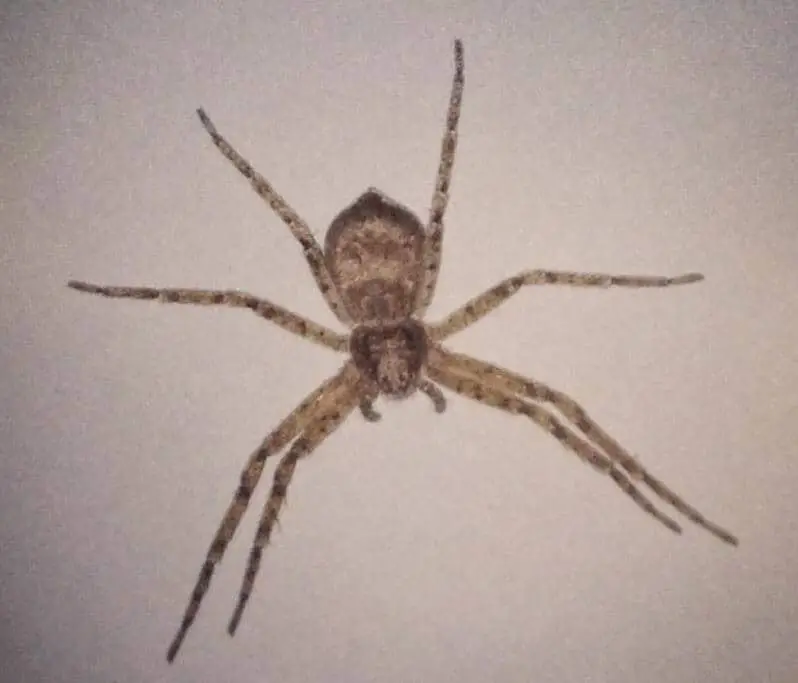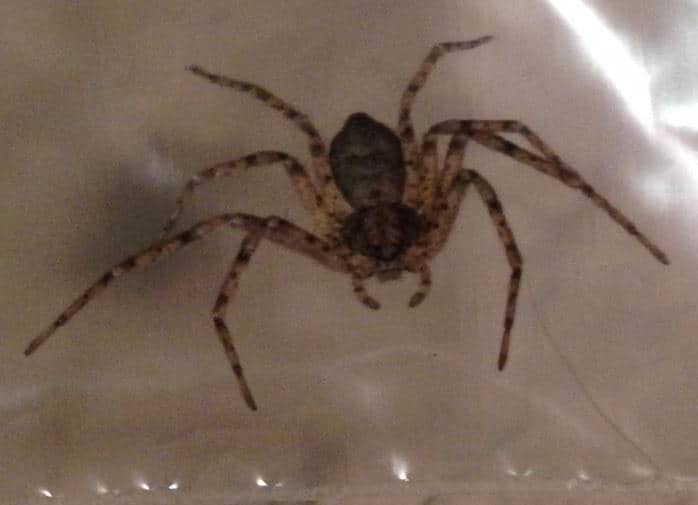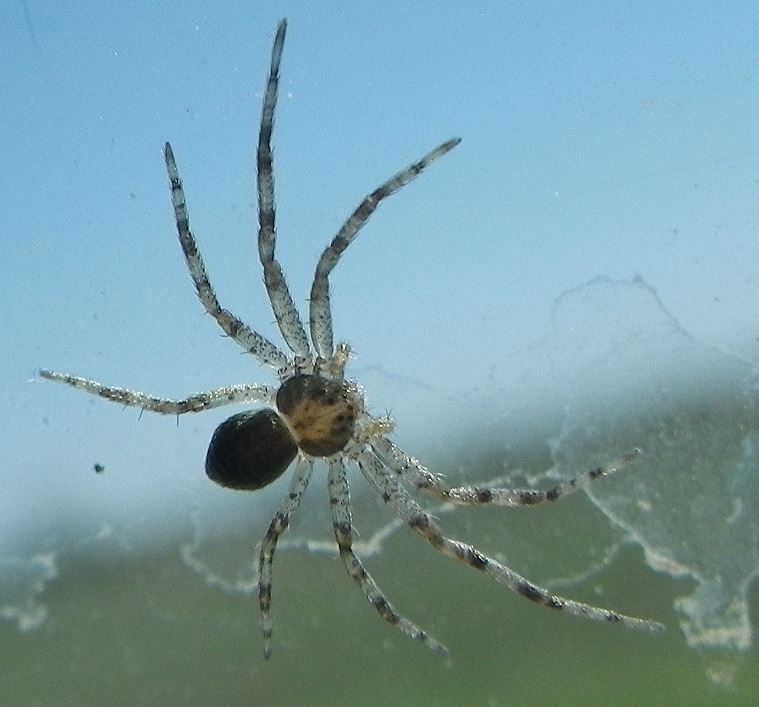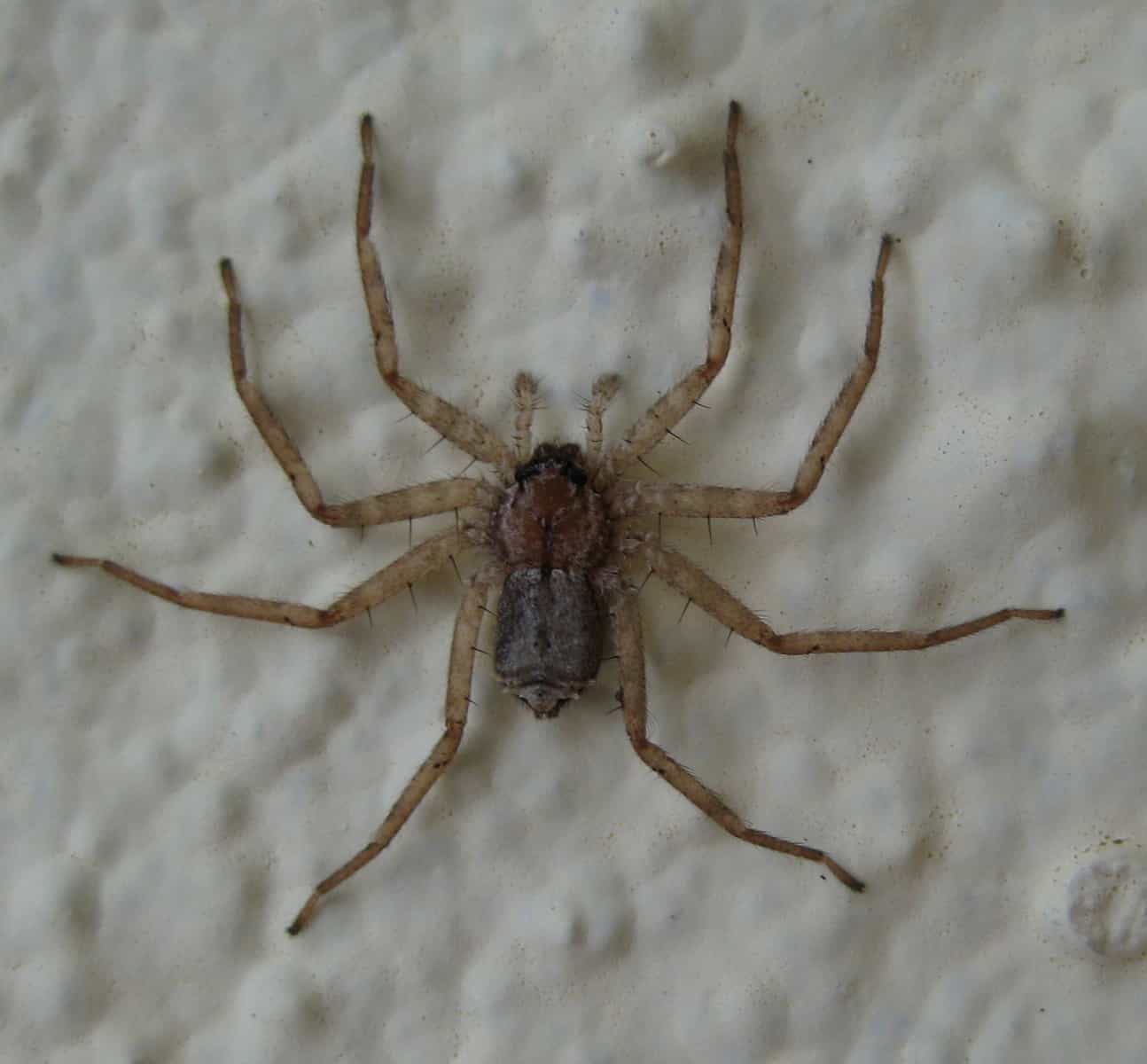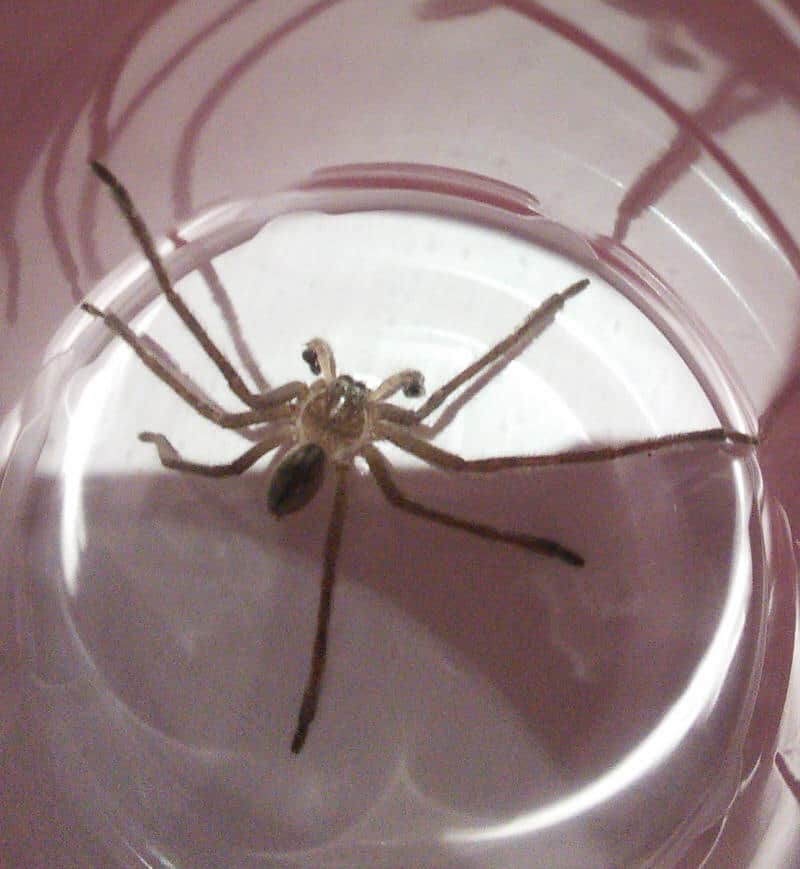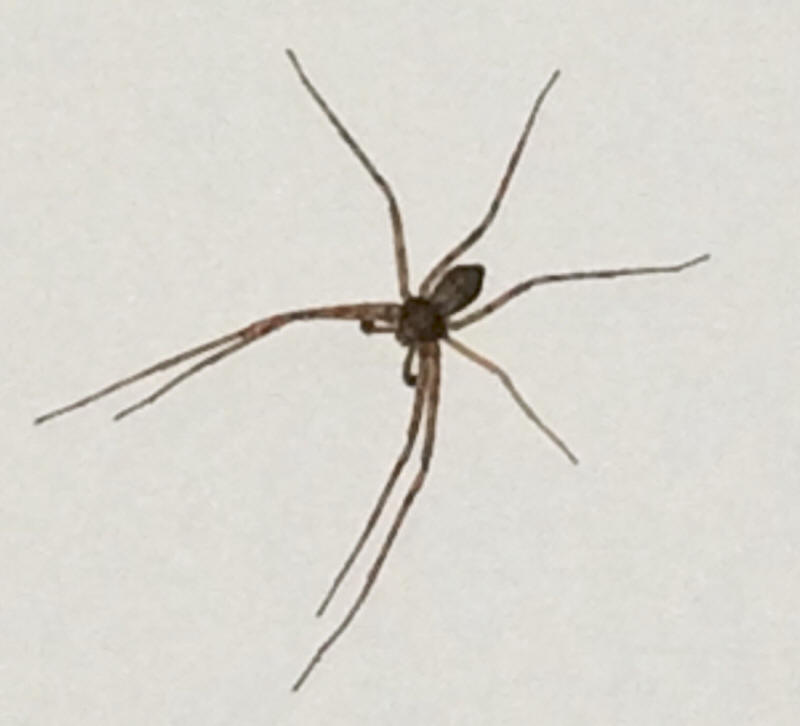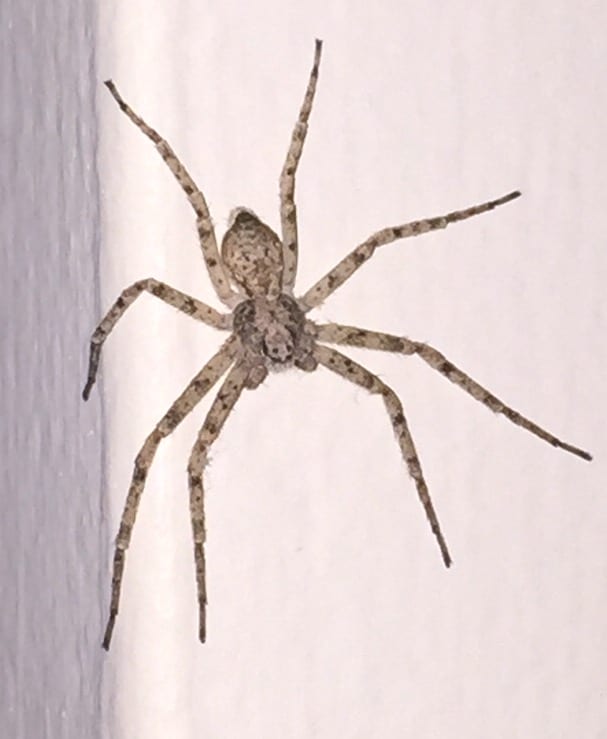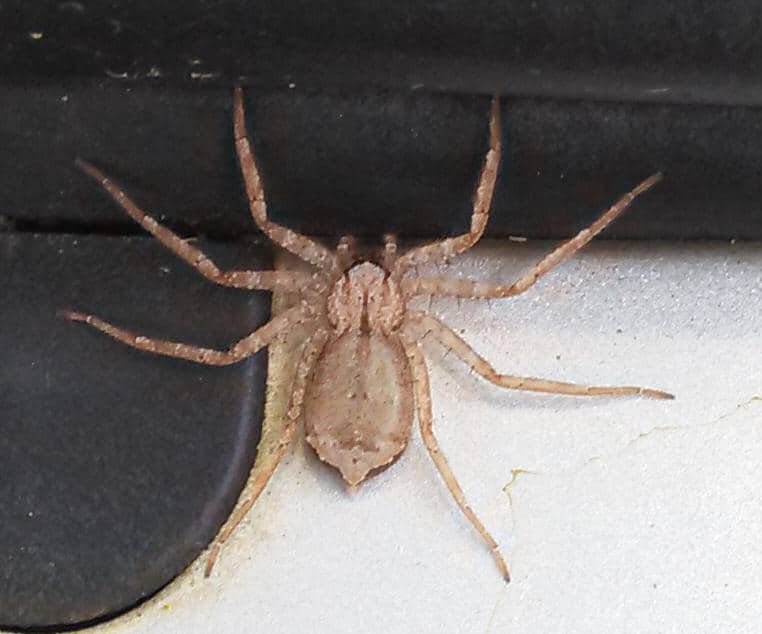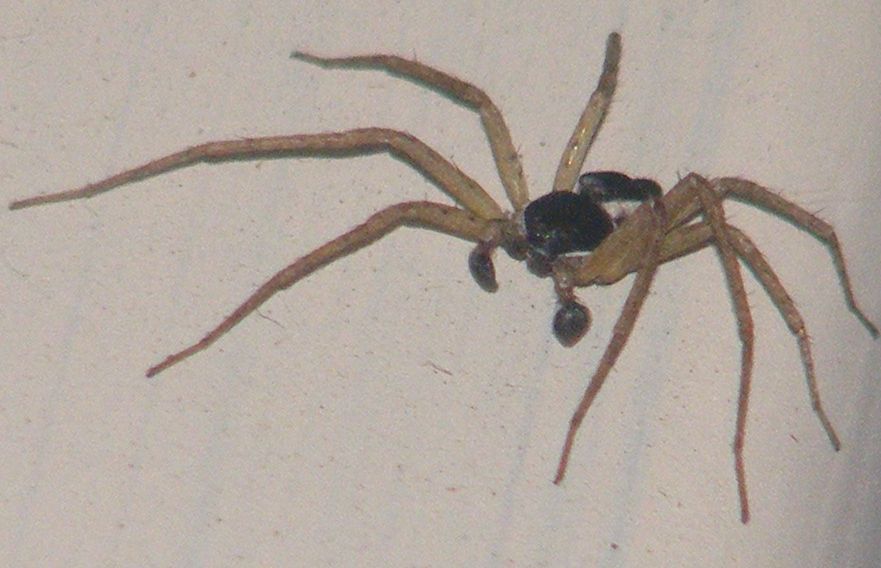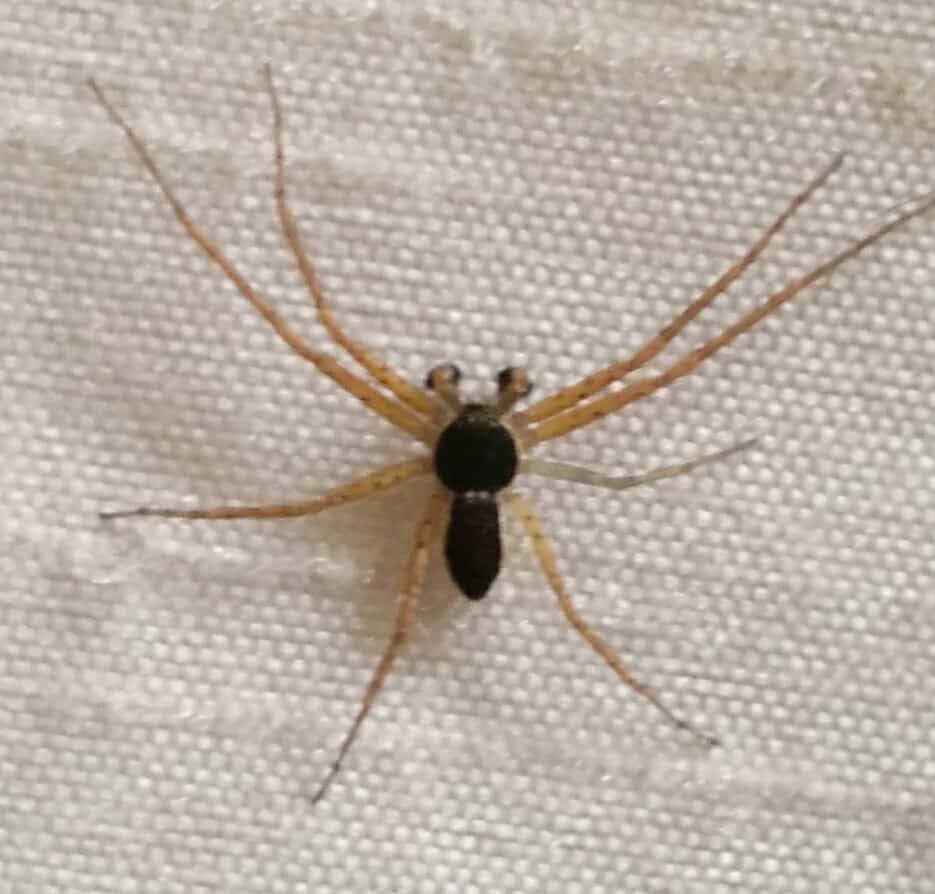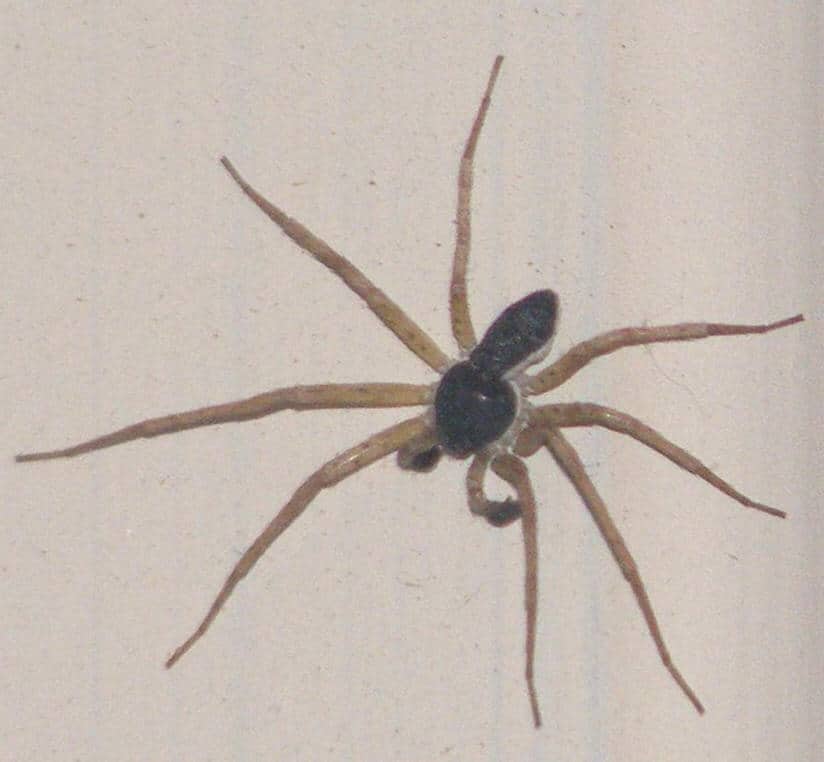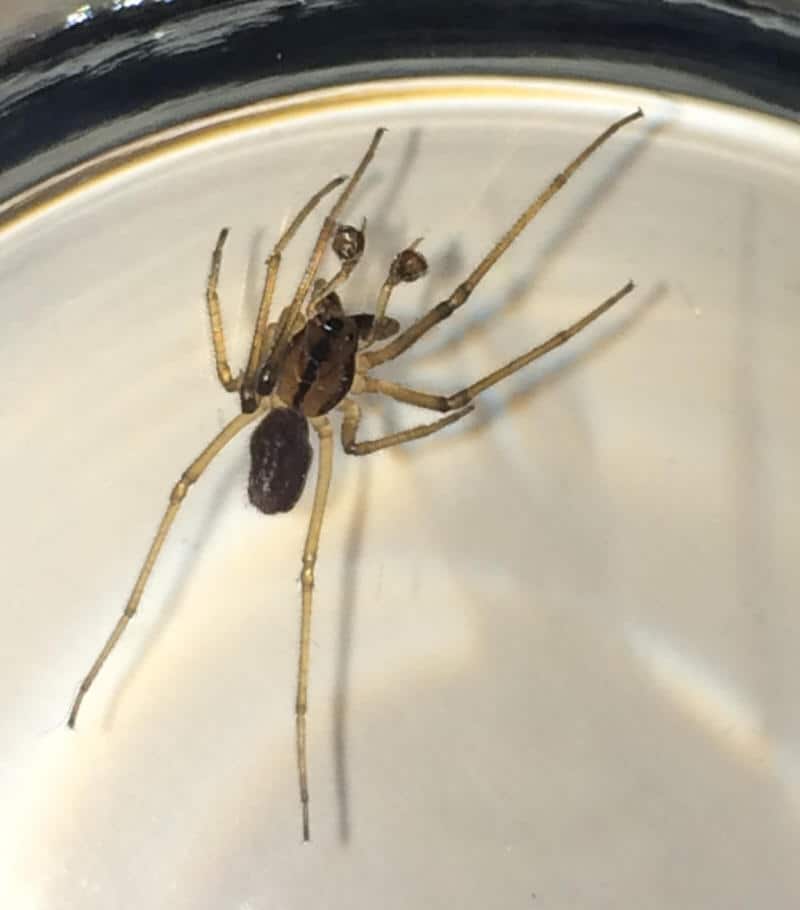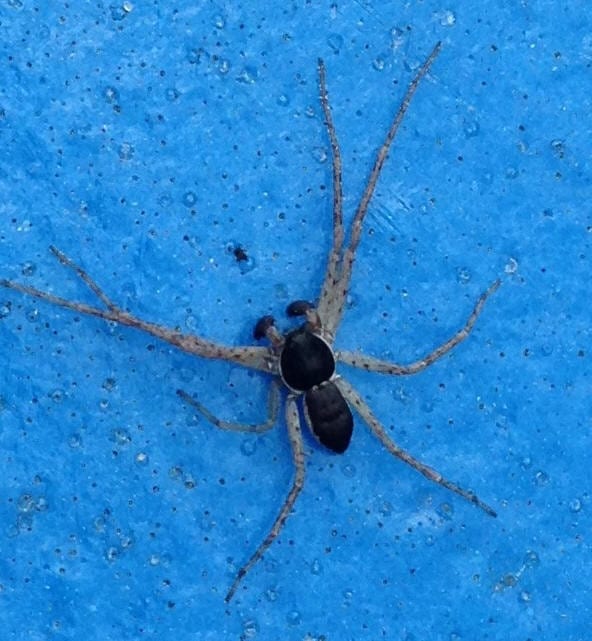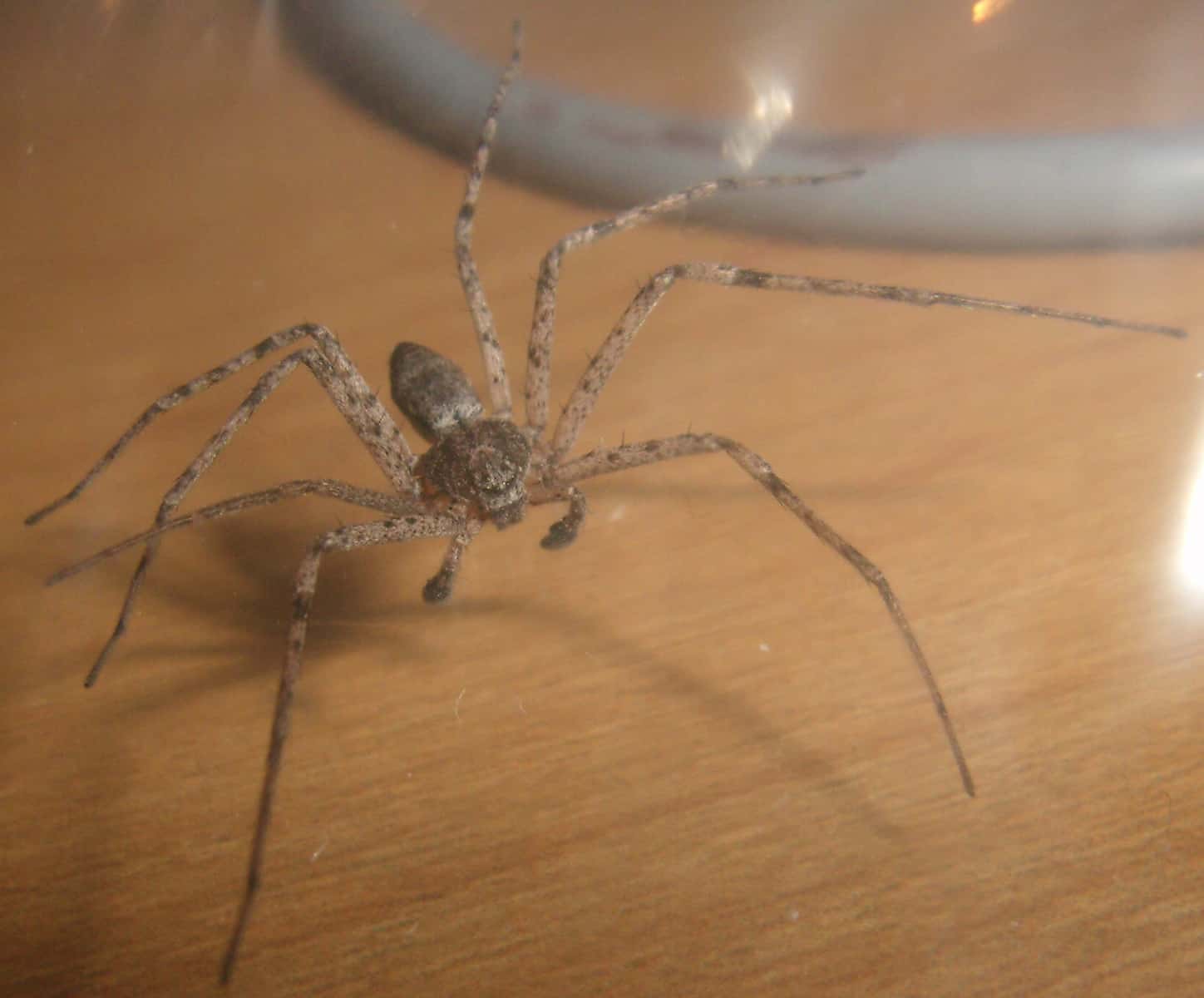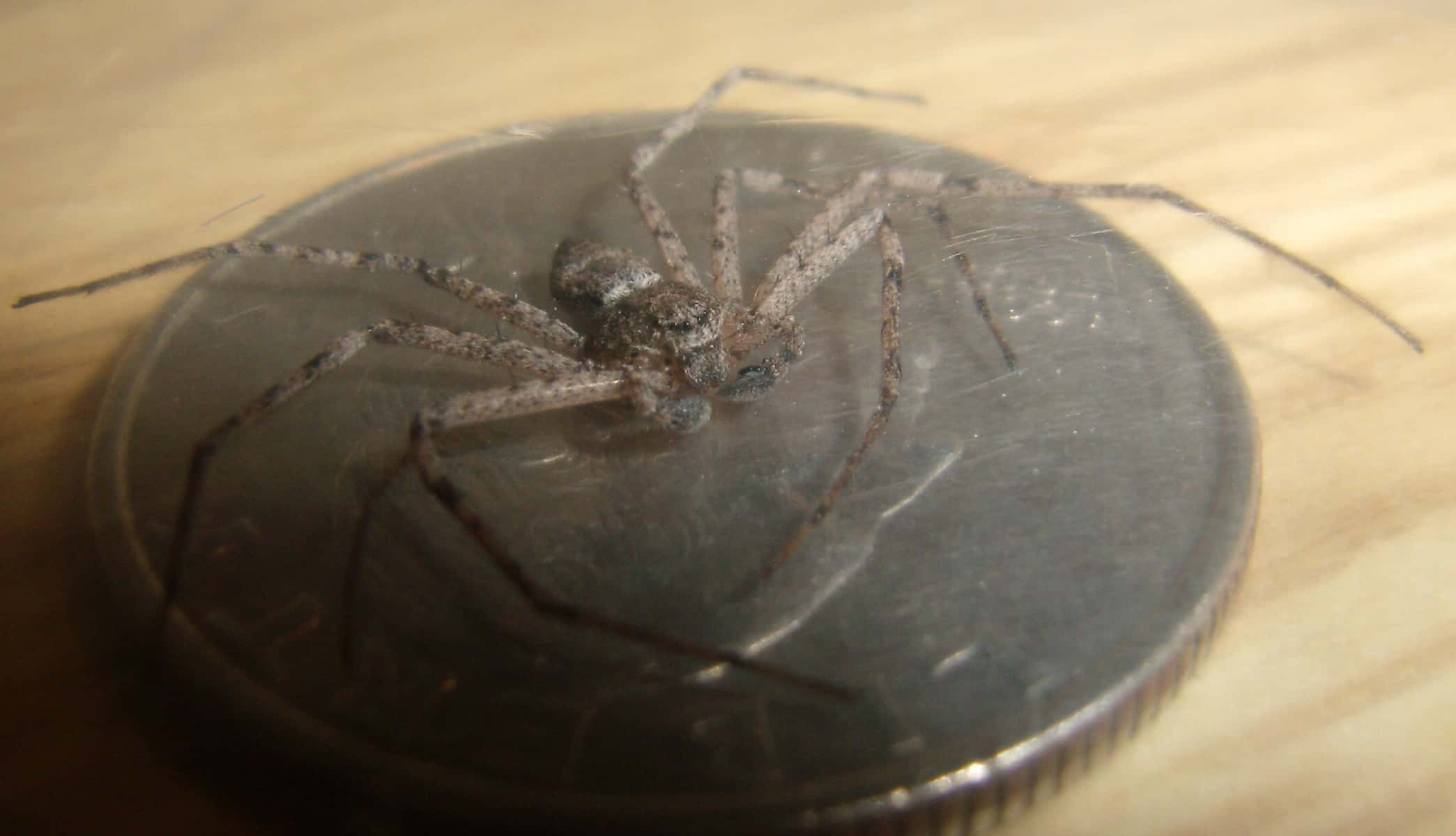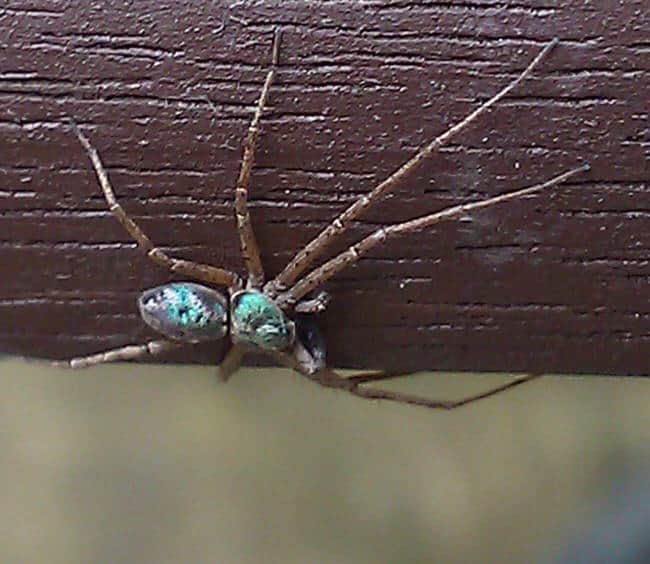Philodromidae, also known as philodromid crab spiders and running crab spiders, is a family of araneomorph spiders first described by Tord Tamerlan Teodor Thorell in 1870. It contains over 600 species in thirty genera. They are commonly known as “running crab spiders“, after their speed and the fact they run sideways, like their seafood counterparts.
This family is superficially similar to the “true” crab spiders in the family Thomisidae. One distinguishing characteristic of the running crab spiders is their legs: unlike crab spiders in the family Thomisidae, the Philodromids’ second set of legs are the longest and in the genus Ebo this is quite extreme, with the second pair of legs in some species twice as long as the first pair. These spiders are often found indoors, living in the corners of ceilings and walls. However, these spiders do not build webs – the cobwebs in the picture below are the product of another spider, the cobweb spider Steatoda.
Running crab spiders hunt prey as do jumping spiders and do not rely on webs to capture food. The most common genus is Philodromus which, like Ebo is widespread. Other common genera include the elongate grass-dwelling Tibellus and the widespread Thanatus, which includes the widely distributed Holarctic house crab spider Thanatus vulgaris.
This species commonly captures flies on and in buildings. The family contains over 500 species in nearly 30 genera. Most are dull colored- brown, gray, yellowish or mottled, and seldom reach above 10 mm in body length. Most have a leaf-like cardiac mark on the anterior dorsal abdomen. None of the species build webs, but they do use silk for draglines and for egg sacs.
Information: Wikipedia
All photos are copyright to their owners and may not be reproduced without permission.

